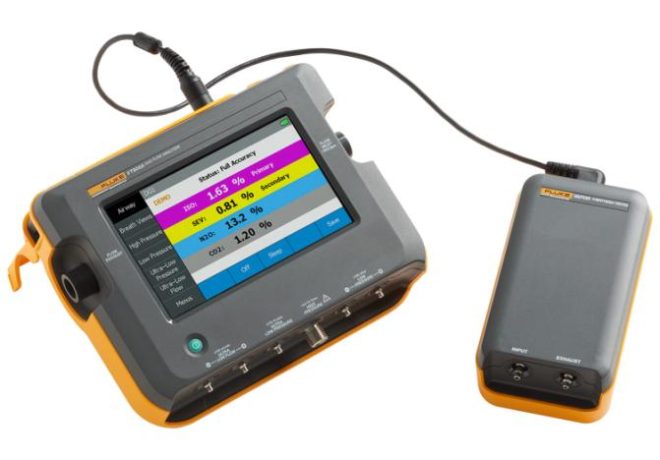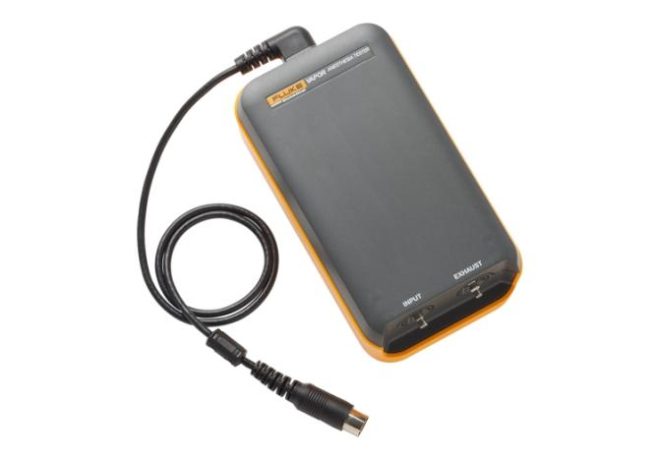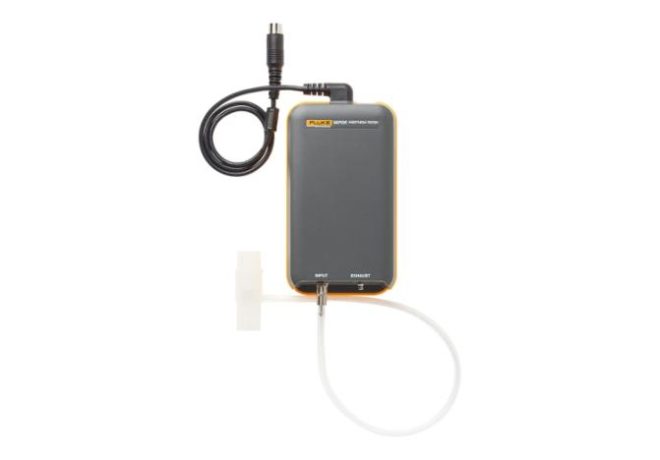




VT900A Gas Flow Analyzer + VAPOR Anesthesia Tester
VT900A Gas Flow Analyzer + VAPOR Anesthesia Tester
Patient Safety First. Keep your life critical devices running properly.
Hundreds of millions of surgeries were performed worldwide, many of which require general anesthesia. Anesthesia is often administered via inhaled gases delivered by an anesthesia machine. Under-administration can cause unintended intraoperative awareness, wherein patients are partially awake but unable to speak and move. Such incidents can sometimes result in long-term psychological trauma. Over-administration can cause cardiac arrest and sometimes death. To prevent such instances, the ventilator and vaporizer functions of an anesthesia machine need to be routinely tested to ensure patient safety.
One solution for all your anesthesia delivery system and ventilator testing needs.
The VT900A Gas Flow Analyzer provides the highest accuracy for testing gas flow and respiratory medical equipment.
Results made easy
The VAPOR Anesthesia Tester is an accessory to the VT900A that expands your testing capability to vaporizers. VAPOR automatically detects the 5 major anesthetic agents, CO2, and N2O, and identifies them by their international color code for easy identification – no effort on your part. Two agents can be detected simultaneously allowing for the identification of failure modes beyond concentration – such as the failure of an interlock system. The addition of VAPOR to the Gas Flow Analyzer family allows you to test an anesthesia machine end-to-end with a single product solution.
Key Features
- Streamline your testing procedure by performing a complete anesthesia machine PM/efficacy test with one setup
- Avoid confusion and improve efficiency with auto-detection of anesthetic agents and color-matched gas identification
- Reduce bulk and improve ease of transport with a convenient carrying case for the lightweight accessory and gas flow module
- Operate on-the-go with durable, robust design
- Simplify calibration and servicing with one manufacturer for all anesthesia test equipment
- Reduce testing time with 7-in. color touch screen, quick-connect fitting and complete anesthesia hosing accessory kit
- Confidently test with accuracy that meets vaporizer manufacturer recommendations
- Ensure patient safety with automatic detection and measurement of CO2, N2O and five commonly used anesthetic agents
| Model Name | Part Number | Description |
|---|---|---|
| VT900A + VAPOR | 5014727 | VT900A Gas Flow Analyzer VAPOR Anesthesia Tester |
| VT900A + VAPOR with ACCU LUNG II | 5067868 | VT900A Gas Flow Analyzer VAPOR Anesthesia Tester ACCU LUNG II |
| VT900A + VAPOR with ACCU LUNG | 5067879 | VT900A Gas Flow Analyzer VAPOR Anesthesia Tester ACCU LUNG |
The features that differentiate the VT900A and VT650 are the ability to measure ultra-low flow and ultra-low pressure, the ability to use an external TTL trigger input and improved oxygen sensor accuracy and lifetime (1% accuracy and a 2-year lifetime vs. 2% accuracy and a 1-year lifetime).
From a technical standpoint, there is no difference between the VT900 and the VT900A. The only difference is that a connector was added at the rear panel to allow for power and communication to the VAPOR Anesthesia Tester
The VAPOR Anesthesia Tester is an accessory to the VT900A that allows for preventive maintenance / efficacy testing of vaporizers. VAPOR can test the concentration of 5 major anesthetic agents, CO2 and N2O.
VT900 lacks the connector on the rear panel that provides power and communication to the VAPOR Anesthesia Tester. Only the VT900A has this connector.
All of these products have an 8-hour battery life allowing you to test all day, on-the-go.
Saving results is easy on any of these units. From any screen there is a blue box in the bottom right called “Save”. Press on this button and you are able to save your results as data, a graph, a recording or under a new Test ID. These results can then be recalled from the onboard memory under “Menus” and “Memory”.
There are two sensors to zero on these devices. The first is the airway flow sensor. You want to zero this without the breathing circuit attached. From the “Airway” screen, press “Zero”.
The second sensor to calibrate is the oxygen sensor. From the “Menus” screen, press “Calibrate Oxygen” and the device will lead you through the steps to calibrate your sensor using air and oxygen.
The connection to our gas flow analyzers changes depending on the testing you are about to do.
If you are testing breath parameters or bi-directional flow the connection should be a Y connector on the flow inlet side and a calibrated test lung on the flow exhaust side. Always use an antibacterial filter on the inlet side to elongate the life and accuracy of your gas flow analyzer.
When testing uni-directional flow or concentration measurements the DUT simply needs to be connected to the flow inlet side using an antibacterial filter.
The connection of VT900A for testing the ventilator function of an anesthesia delivery system is unchanged from normal breath by breath or constant flow testing.
VAPOR needs to be used to test the anesthetic agent concentrations as well as carrier gas concentrations. VAPOR is connected to the VT900A using the connector on the back of the VT900A. The inlet should be connected to the fresh gas outlet using a tee connector to pull a side stream sample. The exhaust ends of the tee connector and VAPOR should be connected to the anesthesia gas scavenging system (AGSS).
WARNINGS:
- Do not run anesthetic agent through any ports of the VT900A.
- Only pull side stream samples into VAPOR using a tee accessory.
The breath detection mode should be changed depending on what it is that you are testing. Breath detection modes can be changed under “Menus”, “Setup”, “Breath Detect”.
If you are testing breath parameters using a test lung, you want to be in bi-directional mode. This will allow the flows to pass through the gas flow analyzer in both directions to simulate human breathing.
Uni-directional flow or continuous “off” flow is used when testing parameters that should be at a constant setting (flow rates, oxygen concentration). This allows for the gases to pass through the gas flow analyzer in only one direction.
The connection to our gas flow analyzers changes depending on the testing you are about to do.
If you are testing breath parameters or bi-directional flow the connection should be a Y connector on the flow inlet side and a calibrated test lung on the flow exhaust side. Always use an antibacterial filter on the inlet side to elongate the life and accuracy of your gas flow analyzer.
When testing uni-directional flow or concentration measurements the DUT simply needs to be connected to the flow inlet side using an antibacterial filter.
Under “Menus” and “Special Tests” there are a number of tests that can help troubleshoot and identify failure modes. These tests include:
- Airway Pressure Leak Test
- High Pressure Leak Test
- Low Pressure Leak Test
- Ultra-Low Pressure Leak Test
- Trend Test
- Stacked Volume Test
- High Frequency Test
There are certain applications that require high resolution and high accuracy to ensure functional performance. Examples of such devices would be anesthesia machines and neonatal ventilators. In these applications, you simply connect the tubing to the ports on the nearside of the VT900A and switch your screen to the ultra-low flow and ultra-low pressure views.
The Excel Plug-In is used to download test data to your PC for upload. The Excel Plug-In can download numerical data as well as graphs to ensure that you are able to get your test results into a report and even into your CMMS. Easily download the Plug-In from the gas flow analyzer software page and install on your PC.
